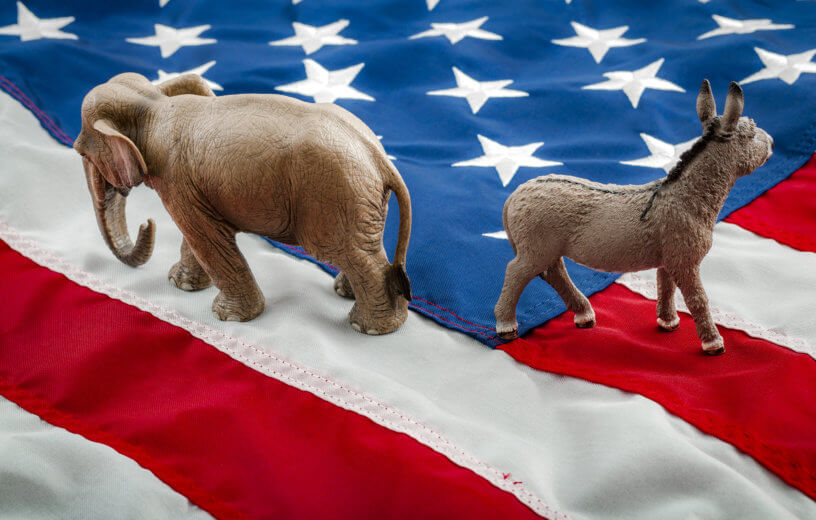Authors say middle ground has vanished in politics: If two people can’t agree on one issue, they’ve never been more likely to disagree on all issues.
UNIVERSITY PARK, Pa. — You don’t need a study or headline to know that America feels incredibly divided right now. That being said, a new study from Penn State suggests that U.S. political polarization isn’t just getting stronger or more intense; it’s also spreading and encompassing more seemingly unconnected issues, and some topics that aren’t even political.
Essentially, party lines and stances on one issue are becoming increasingly correlated. For example, a few years ago two people may have disagreed on abortion rights, but would have found common ground regarding taxes or gun laws. Now, however, politics have turned into much more of an “all or nothing” game. If two people can’t agree on one issue, they’ve never been more likely to disagree on all issues.
“This study represents a different structural element of polarization, which is how different opinions and beliefs are related to one another in the population at large,” says study author Daniel DellaPosta, assistant professor of sociology and social data analytics at PSU, in a release.” This builds on a long line of work, often called opinion alignment.”
Middle Ground A Thing Of The Past In Politics
DellaPosta’s analysis of a national opinion survey also revealed that less and less Americans hold opinions that both liberals and conservatives can conceivably agree on. Everyone is moving toward the more extreme ends of the political spectrum; there is less room for compromise.
“People who have studied polarization in the past have often concluded that polarization has increased in some ways, but it is not occurring in the opinions in the population as a whole — and that’s been a somewhat comforting thought,” he explains. “In a sense, this study provides a less hopeful conclusion because it suggests that it’s not just that, for example, political parties have become more extreme, but that polarization has happened in the population itself.”
All in all, the study’s authors say their results paint a picture of a nation falling further and further into political division.
“Political divisions have become broader and it seems that these divisions have come to incorporate much more and include opinions that were once not involved,” DellaPosta adds.
Political ‘Oil Spill’ Leaving Sheen On Once-Nonpolitical Waters
Dellaposta uses the analogy of a fence versus an oil spill to articulate the difference between what’s happening today and polarization in the past. Years ago, people may be on “different sides of the fence” when it comes to a political issue, but now all the issues are seeping into one another and becoming interconnected.
“I think of that average opinion alignment as a fence — the divisions are there, but they’re not moving,” he says. “In an oil spill division, it’s not just that the previously existing division is getting stronger, it’s that other opinions that weren’t even part of those division to begin with are getting drawn in.”
This is perhaps most obvious when we observe how completely non-political subjects and topics have taken on a partisan slant.
“You may have heard politicians referring to ‘latte-drinking liberals,’ for example, which captures the idea of the oil spill,” DellaPosta notes. “Why should something like drinking a latte become associated with your political ideology? Or, if someone goes to a football game and sees a bunch of trucks in the parking lot with U.S. President Donald Trump bumper stickers and that becomes internalized to suggest that liking football means fans support Trump. That’s another way that things that previously weren’t political suddenly get sucked into this matrix of political identity.”
Researchers used data originally collected by the University of Chicago between 1972 and 2016 to conduct this study. Using all that information a network model was created similar to how sociologists track social networks and connections between people. Nearly 15,000 pairs of opinions were included.
The study is published in the American Sociological Review.
Like studies? Follow us on Facebook!
